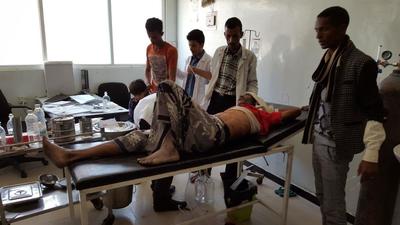More than 100,000 asylum seekers united in their desire to escape conflict, instability and persecution have fled from countries like Syria, Somalia and Yemen since the start of 2015.
There are many legal and illegal routes to Europe, but Libya is now the most popular transit point because it is politically unstable and has a long and open coastline.
In a bid to seek asylum and a safer life, people are paying smugglers to ferry them across the Mediterranean in unsafe and overcrowded fishing boats.
In the first five months of 2015, more than 1,800 people have died.
Since May, Médecins Sans Frontières/Doctors Without Borders (MSF) and Migrant Offshore Aid Station (MOAS) have been responding to the crisis on the My Phoenix ship, along with two additional ships, the Bourbon Argos and most recently, Dignity 1, operated solely by MSF.
MSF teams have assisted with more than 2,290 rescues so far.
The names in these testimonials have been changed.
Sameer from Yemen
It took a month for 40-year-old Sameer to reach the Mediterranean. He travelled through Djibouti, Eritrea and Sudan before he finally reached Libya. He preferred not to appear on camera.
Yemen is in the midst of a regional war. Plagued by political instability, droughts and famine, Yemen is also one of the poorest countries in the Middle East.
Current fighting between government forces and Iranian-backed Houthi rebels has become so intense that desperate Yemeni’s are moving through Djibouti and Somalia to reach Libya, and then onwards onto boats to Europe.
Halil from Syria
Halil fled the conflict in Syria with a group of friends. He didn’t tell his family he was leaving the country.
In its fifth year of civil war, and with no end in sight, four million Syrians are now displaced in the region. With limited options in the Middle East, many are making the risky sea voyage to other countries where they can seek humanitarian assistance, find work and put their children into school.
They are fleeing across Jordan and Egypt, north to the shores of the Mediterranean and on to Turkey and Greece.
Aasiya from Somalia
Aasiya, who is in her thirties, is the mother of seven children. Three of her children have died, and she has lost contact with the other four. She says she fled Somalia in search of a new life in a safe country.
Tens of thousands of Somalis are joining the mass migration across the Mediterranean to escape a country suffering from prolonged insecurity and violence. Many make the hazardous trip through the burning desert between Sudan and Libya, with thousands dying before they reach their next stop – a smuggler’s boat.
Prior to boarding a boat, they may often be stuck in detention centers or smuggling camps.
Refugee crisis
It is feared that 2015 will be the deadliest year yet for those risking the Mediterranean crossing. More than five times the number of people making the journey have died, compared to the same period last year.
The world is facing the largest refugee crisis since World War Two. European Union governments must take their fair share of responsibility for hosting the massive numbers of refugees who are fleeing conflict today.
It cannot go on. European Union states have the collective means and the responsibility to scale up and maintain a robust search and rescue effort. This will prevent further death.
However, search and rescue efforts are not in itself a solution, as people will continue to put their lives in the hands of smugglers for as long as there are no safe alternatives to seek asylum in the European Union.





